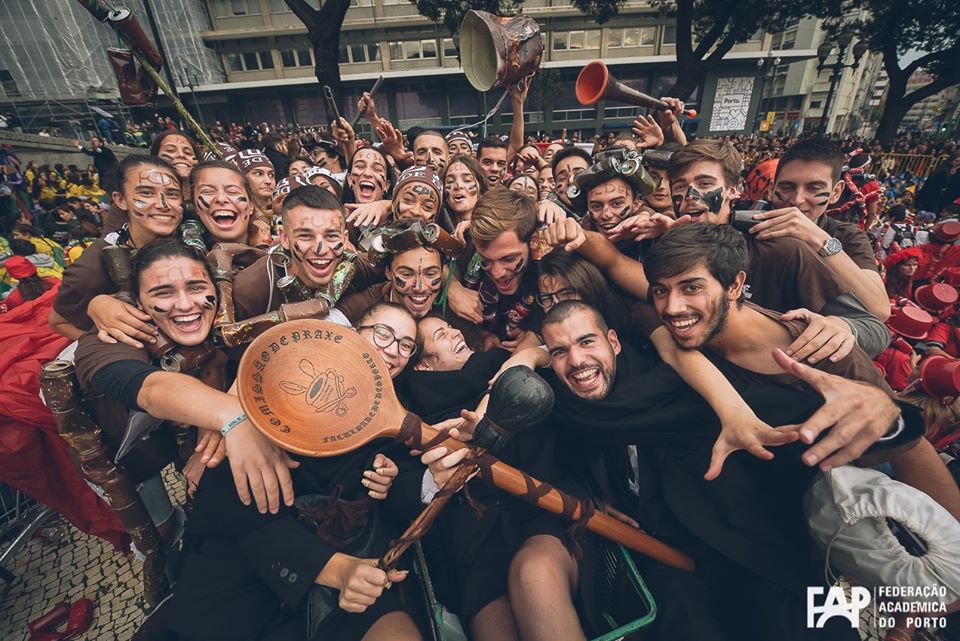
The following article is in English (Black) and Portuguese (Grey).
O seguinte artigo encontra-se em Inglês (Preto) e Português (Cinzento).
If there’s a thing that Erasmus students find fascinating and very unique about Portugal’s universities is our Academic Traditions. Portugal has a very amazing and different way of celebrating the student life and we live it to the absolute fullest! Since activities that people find very weird but interesting at the same time, to activities that gather thousands of people in the main avenues of the cities!
Se há algo que os alunos de Erasmus consideram único e fascinante nas universidades portuguesas são as nossas Tradições Académicas. Portugal tem uma forma incrível e muito diferente de celebrar a vida estudantil e nós vivemo-la ao máximo! Desde atividades que as pessoas acham estranhas, porém interessantes, a atividades que juntam milhares de pessoas nas avenidas principais das cidades.
Since you’re a rookie in Portugal’s student life, let’s start from the beginning! First, the most curious and beautiful thing about our academic traditions is what we call “Traje”. Our traje is our student uniform. Curious fact: J. K. Rowling lived in Porto for a few years and she was inspired by our Traje, and Livraria Lello, to create the aesthetic and costumes for the Harry Potter books and movies. We have the feminine Traje and the masculine Traje, which you can see in the pictures down below its composition and how we use it. Also, our Traje has some differences in each city of Portugal. Porto’s and Coimbra’s Traje are the same (picture down below). We have specific and strict rules in how to wear it and the frequency that we use it depends on each university. In case of ISCAP, we use it twice a week, on wednesdays, thursdays and occasions where we have academic activities. One final thing: every college student can wear it.
Visto que és novo na vida académica portuguesa, vamos começar pelo início! Primeiramente, a coisa mais bonita e curiosa sobre as nossas Tradições Académicas é o nosso Traje. Ou seja, o nosso uniforme de estudante. Facto curioso: a J. K. Rowling viveu no Porto durante alguns anos e inspirou-se no nosso Traje, e na Livraria Lello, para criar a estética associada aos livros/filmes do Harry Potter, assim como o uniforme presente nos mesmos. Existe o Traje feminino e o Traje masculino. Sendo que, podes ver nas imagens abaixo a sua composição e como o usamos. De acrescentar, também, que, o nosso Traje difere de cidade para cidade, exceto no Porto e em Coimbra, que é o mesmo (imagens abaixo). Nós temos regras rígidas e específicas quanto à forma que o usamos e a sua frequência de uso depende de cada universidade. No caso do ISCAP, usámo-lo duas vezes por semana (à quarta e à quinta feira) e em atividades académicas. Nota: cada estudante universitário pode usá-lo.


The second most amazing thing about our traditions is what we call “Praxe”. Praxe was born in Coimbra many centuries ago and is basically integration activities that students from the second year and above prepare for the freshmans when they get into college. In case of ISCAP, in the first weeks we have a series of activities, or rituals, that we do so the freshmans can become true and real students of ISCAP. Almost every university in Porto has them and they are different in each university as well. One important fact: belonging to Praxe is not mandatory and you won’t be left out if you don’t join.
A segunda coisa mais espetacular sobre as nossas tradições é algo que chamamos de Praxe. A Praxe nasceu em Coimbra há bastantes séculos atrás e consiste em atividades de integração que os alunos a partir do segundo ano preparam para os caloiros quando estes ingressam na universidade. No caso do ISCAP, nas primeiras semanas temos uma série de atividades, que alguns chamam de “rituais”, que fazemos de modo a que os caloiros possam tornar-se verdadeiros estudantes do ISCAP. Quase todas as faculdades do Porto, e do país, têm estas atividades e estas diferem de faculdade para faculdade. Facto importante: pertencer à Praxe não é obrigatório e ninguém será posto de parte caso não queira pertencer.
Usually the students from ISCAP love these activites and our university is one of the most famous in Porto for having a very welcoming, fun and unforgettable Praxe. However, this is a very controversial topic in Portugal because some universities don’t practice a correct and respectful Praxe towards the freshman, leading them to give up. It’s also important to mention the fact that Praxe is ruled by a Code that each Academy (Porto, Coimbra, Braga, etc) possesses.
Normalmente os estudantes do ISCAP adoram as atividades e o Instituto é um dos mais famosos no Porto por ter uma Praxe muito acolhedora, divertida e verdadeiramente inesquecível. Contudo, este é um tópico bastante controverso no país devido ao facto de algumas faculdades não praticarem uma Praxe correta e respeitosa perante os caloiros, o que faz com que muitos desistam. É importante referir que a Praxe é regida por um Código existente em todas as Academias (Porto, Coimbra, Braga, etc).
In each university, the freshmen have to wear a different “costume” in their first year. Like we said before, all students can wear the Traje, even the freshmen. But usually, they don’t wear it because they have to prove throughout the year to the rest of the students (second year and above) that they deserve to wear it. Except if they belong to some academic groups like Tunas Académicas, and even there they only wear it in official events. It’s not a written law but it’s a “vocal law” that we all respect. You can see in the pictures down below some Praxe groups with their freshmen.
Em cada universidade os caloiros possuem uma peça de roupa que têm de usar durante o seu primeiro ano de faculdade. Como referimos anteriormente, todos os estudantes podem usar o Traje, até os caloiros. No entanto, normalmente estes não o usam no seu primeiro ano pois têm de provar ao longo desse mesmo ano aos restantes alunos que merecem vesti-lo. Existem casos excecionais, que são os alunos pertencentes às Tunas Académicas, que apenas o usam em eventos oficiais da Tuna. Não é uma lei escrita mas é uma lei “vocal” que todos respeitamos. Podes ver na imagens abaixo grupos de Praxe com os seus caloiros.

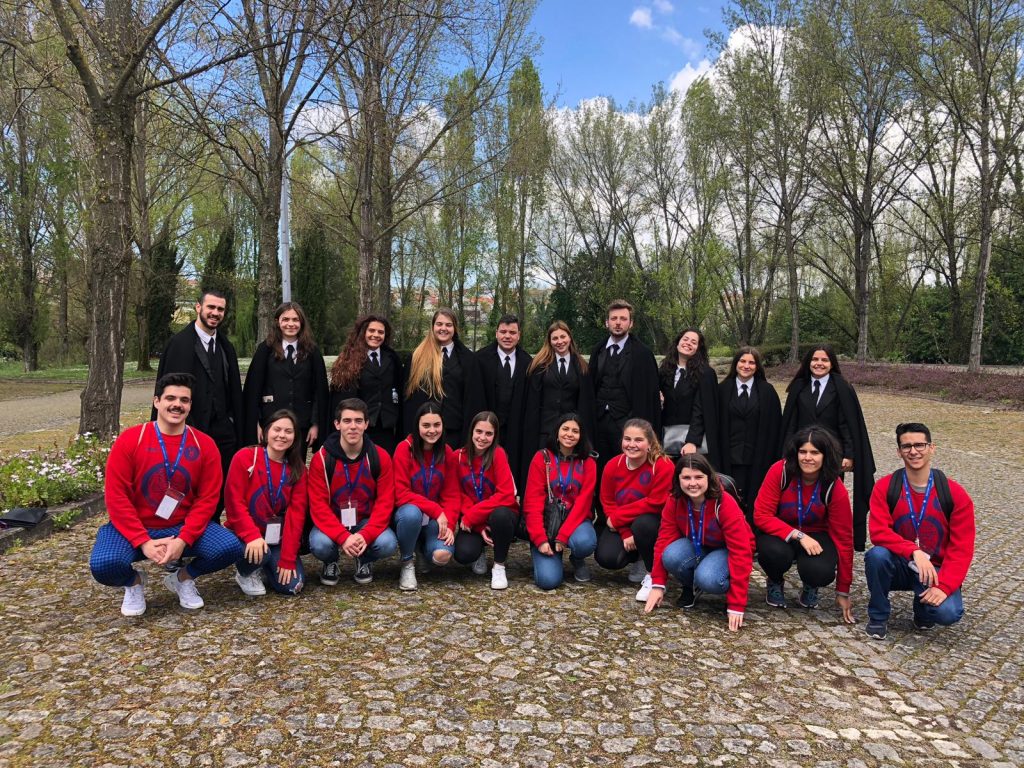
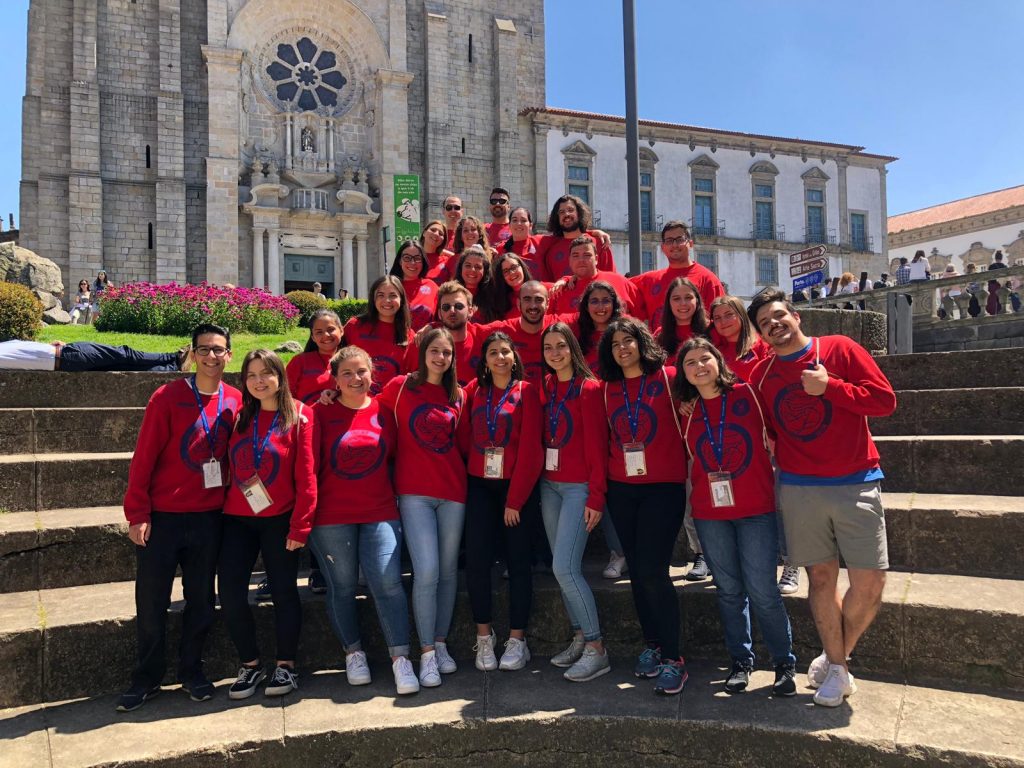

Portugal’s universities are also known for their incredible and talented “music groups”, that we call Tunas Académicas. Tunas are groups of students that gather instruments and good voices to sing “fado académico” and songs that they like and relate to. However, they have a music genre that is very traditional and specific. Tunas are usually composed by only boys or only girls. It’s not very common to see a Tuna composed by boys and girls at the same time.
As universidades portuguesas são, também, conhecidas pelos seus incrivelmente talentosos grupos musicais, que chamamos de Tunas Académicas. Tunas são grupos de estudantes universitários que juntam instrumentos e boas vozes para cantar “fado académico” e músicas que estes gostem e se relacionem. No entanto, as Tunas tocam um estilo musical bastante característico e tradicional. Normalmente as Tunas são compostas por apenas rapazes ou apenas raparigas. Sendo que, não é muito comum existirem Tunas mistas.
There also exists groups like Grupo de Fados or the Orfeão Universitário do Porto. These are groups that only sing “fado académico”. Fado is the traditional portuguese type of music, it’s very sad, emotional and melancholical. “Fado académico” is this type of music but talks about the students experiencies in college, their life as a student, Praxe, etc… Here are some pictures and some links if you want to see how it sounds like.
Existem, também, grupos como os Grupos de Fados ou o Orfeão Universitário do Porto. Estes são grupos que tocam fado académico. Fado é o género de música de excelência português. É bastante triste, emotivo e melancólico. “Fado Académico” é a junção deste tipo de música com letras relacionadas com as vivências dos estudantes na universidade, a sua vida como estudantes, a Praxe, etc. Aqui estão duas imagens e alguns links para veres melhor como são as Tunas.
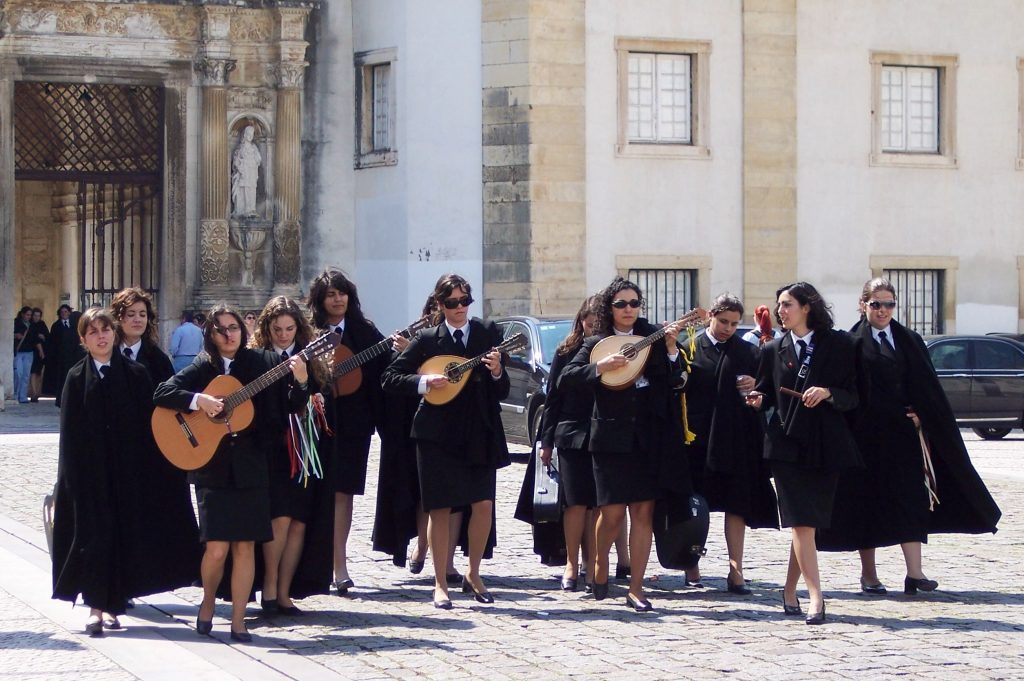
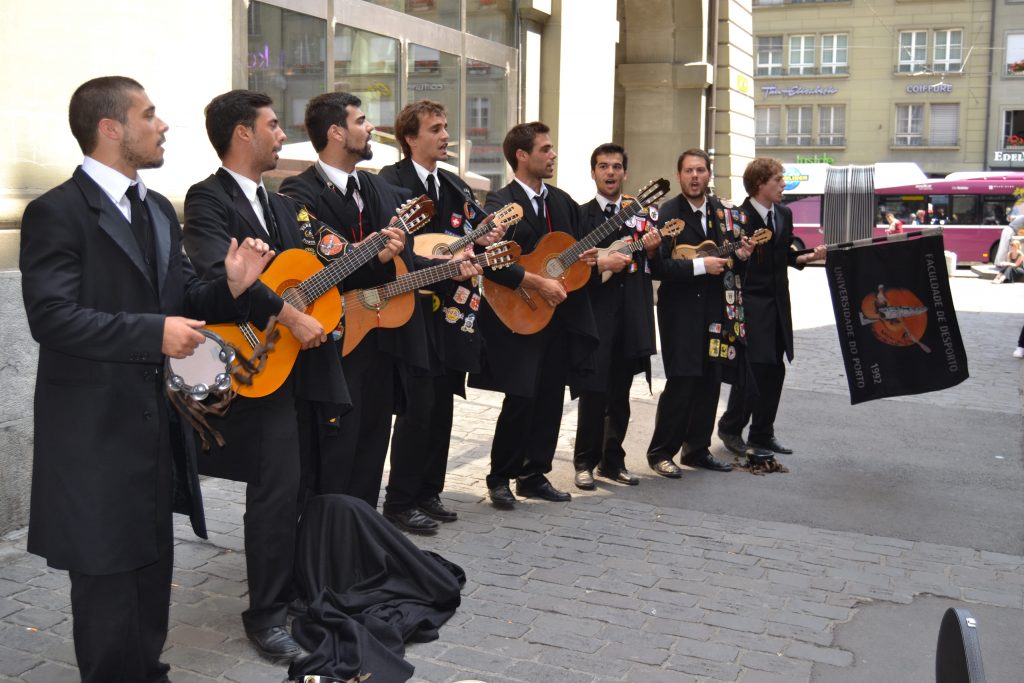
Watch Tunas perform:
Assiste às Tunas a atuarem:
Throughout the year, as we mentioned, we have a lot of activities that we prepare for the freshman. Of course the activities are for us (second year students and above) to enjoy as well and some of them are mainly prepared for finalist students. We have the reception week activities in october in which the most famous ones are “Serenata”, “Comboio do Caloiro” and “Latada, Juramento e Batismo”.
Tal como mencionamos, ao longo temos bastantes atividades que preparamos para os caloiros. Obviamente, as atividades também são destinadas aos estudantes mais velhos. Sendo que, algumas são exclusivamente preparadas para os estudantes finalistas. Na semana de receção em outubro existem diversos momentos importantes, pelo que os mais famosos são a “Serenata”, o “Comboio do Caloiro” e a “Latada, Juramento e Batismo”.
Serenata is a very important and deep moment because is where groups like Orfeão Universitário do Porto sing Fado Académico in the main avenue of the city. It gathers thousands of students and it’s a very emotional and serious moment. “Comboio do Caloiro” also gathers hundreds of students and we all go to another city of Portugal, usually Aveiro, where we just spend the day having fun and learning about the city’s Praxe tradition. “Latada, Juramento e Batismo” is a parade in the city where the freshmans are “baptised” and become true students of each university where they belong. Here are some pictures and videos of this week:
A Serenata é um momento muito profundo e importante pois é onde grupos como o Orfeão Universitário do Porto cantam Fado Académico na avenida principal da cidade. Reune milhares de estudantes e é um muito sério e emocionante. O Comboio do Caloiro reune, também, centenas de estudantes. Estes deslocam-se para outra cidade portuguesa, normalmente Aveiro é a escolhida, onde passamos o dia a divertirmo-nos e a aprender sobre a Tradição Académica da cidade. A Latada, Juramento e o Batismo é um “desfile” na cidade onde os caloiros são batizados e tornam-se verdadeiramente estudantes de cada universidade a que pertencem. Aqui estão algumas imagens desta semana:

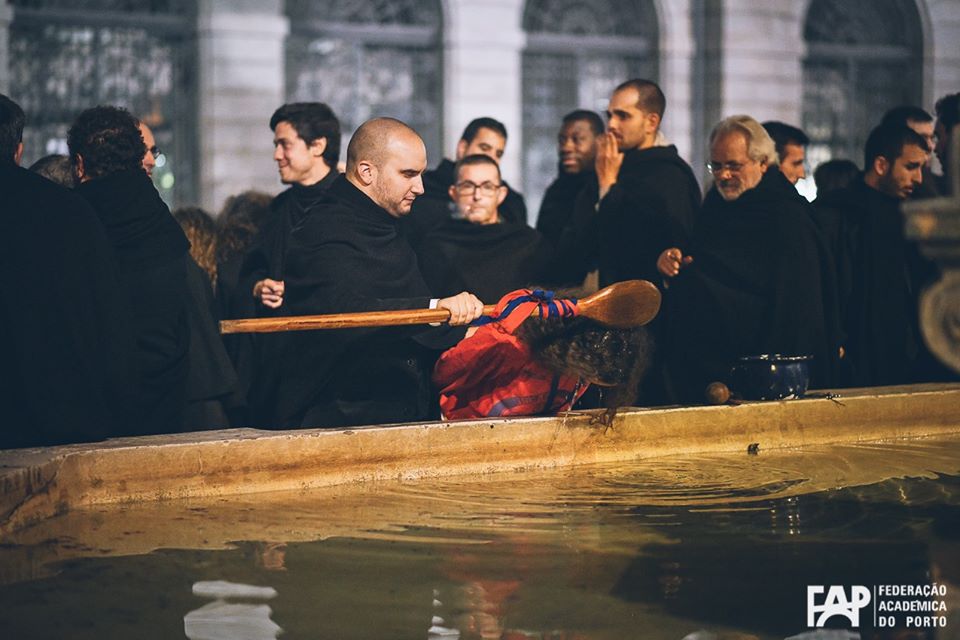
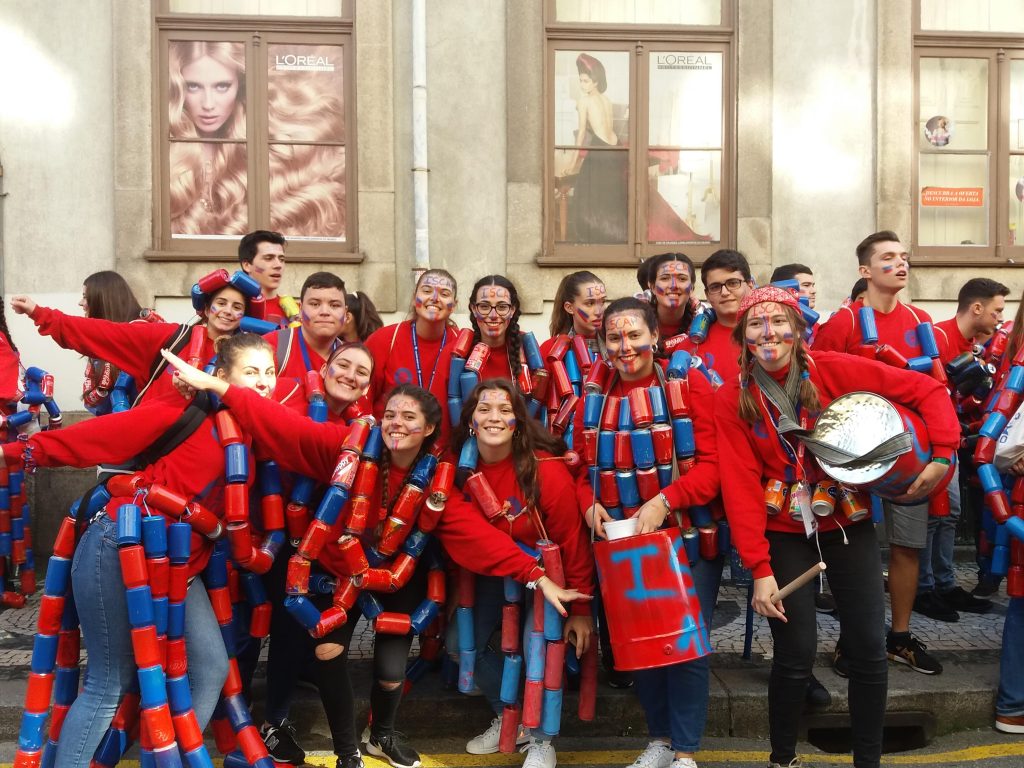
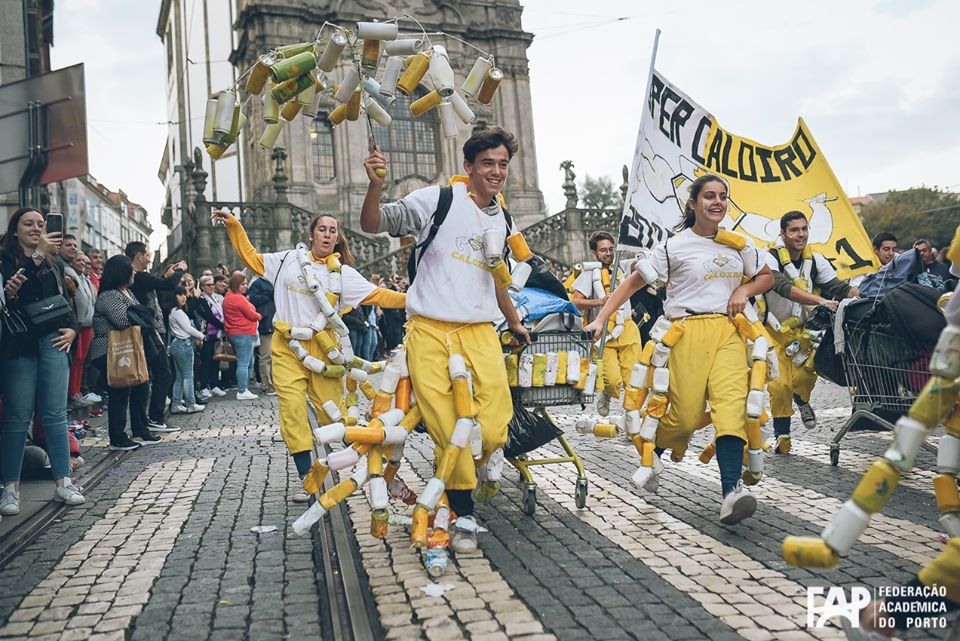
And finally, in the end of the year we have the best week you could possible imagine… QUEIMA DAS FITAS! Queima das Fitas is a seven day straight celebration of the end of the school year. It’s the most important moment for all the students because we celebrate both the freshman students making it until the end of the year and finally wearing the Traje and, specially, the finalist students for finishing their studies.
E finalmente, no final do ano, temos a melhor semana que possas imaginar…. a QUEIMA DAS FITAS! A Queima das Fitas são 7 dias seguidos de celebração do final do ano escolar. É o momento mais importante para todos os estudantes pois é celebrado o facto dos caloiros terem conseguido concluir o ano e já merecerem vestir o Traje, assim como, e o facto mais importante, o fim dos estudos dos estudantes finalistas.
In this week we have activities during the day, like Cortejo, a parade in the city that represents the transition of the freshmans to Doctors and the finalists oficially ending their studies. Cortejo is the most important activity and gathers thousands of students, family and friends from all universities in the city center. Other important activities are Serenata (same as the Serenata that happens in the beginning of the year but even more emotional because it represents the end for a lot of students) or Imposição das Insígnias (Insígnias are “symbols” that represent your transition to the next year).
Nesta semana, durante o dia temos atividades como o Cortejo, um desfile na cidade que representa a transição dos caloiros a Doutores (estudantes a partir do segundo ano) e o conclusão dos estudos dos estudantes finalistas. O Cortejo é a atividade mais importante e junta milhares de estudantes de todas as universidades, amigos e familiares no centro da cidade. Outras atividades importantes são a Serenata, que tem moldes muito semelhantes à Serenata que decorre no ínicio do ano. No entanto, é bastante mais importante e emotiva pois representa o fim de um ciclo para muitos estudantes. Existe, também, a Imposição de Insígnias (Insígnias são símbolos/objetos que representam a transição para o próximo ano letivo).
During the night, we have national artists every single day of the week in Queimódromo de Matosinhos. Every university has its “stand” where they sell (really cheap) drinks and the students just have lots of fun with their friends, celebrating the end of the school year (and, of course, a really bad hangover the next day). You can see some pictures from Cortejo down below and also some videos:
Durante a noite, ao longo da semana, juntam-se artistas nacionais no Queimódromo de Matosinhos. Cada universidade tem a sua “barraquinha”, onde são vendidas bebidas muito baratas e os estudantes festejam com os seus amigos o final do ano letivo (e claro que, na manhã seguinte, existe uma ressaca enorme). Podes ver algumas imagens do Cortejo abaixo, assim como alguns vídeos:
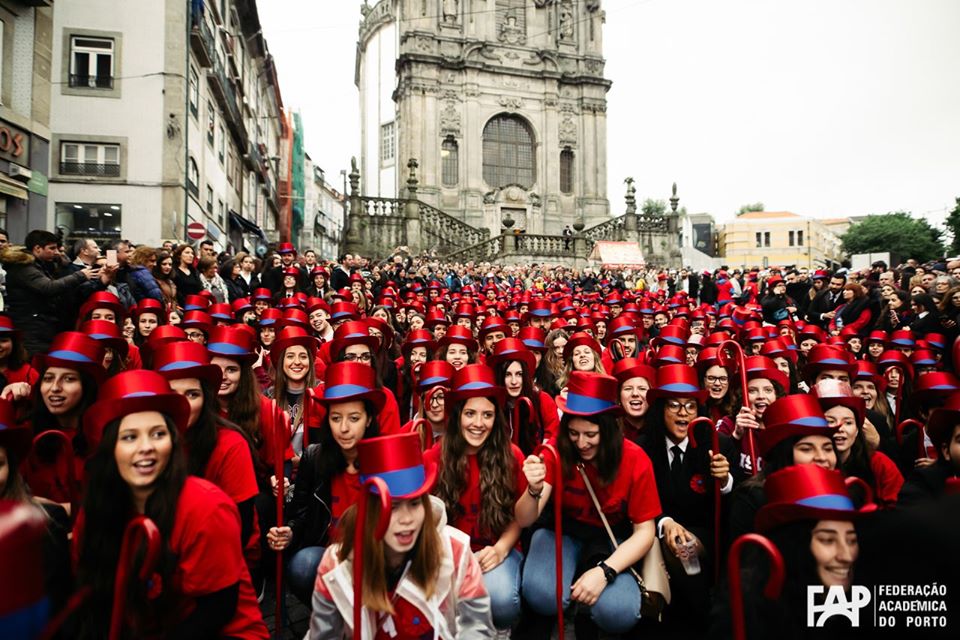
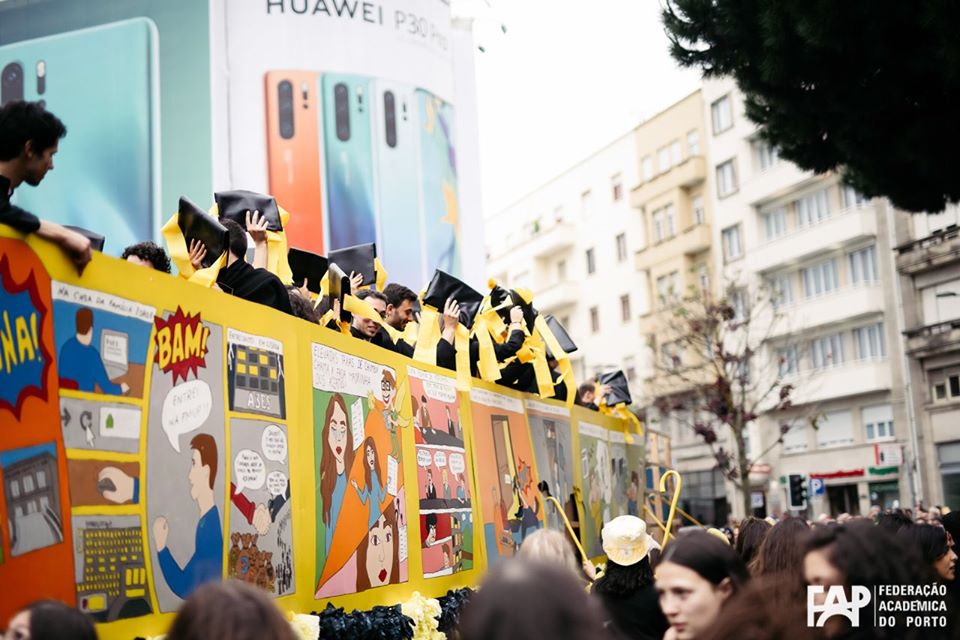
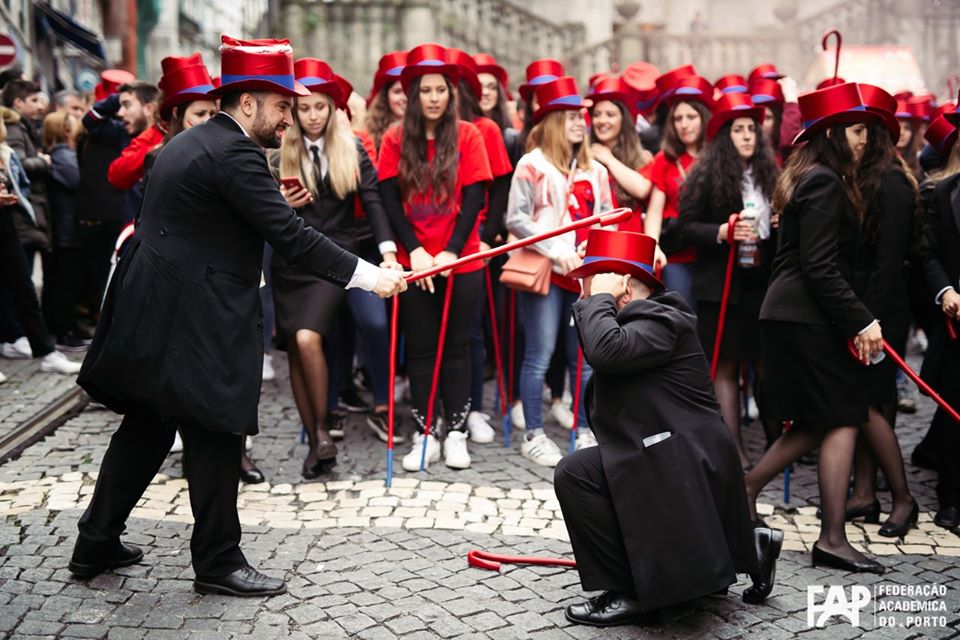
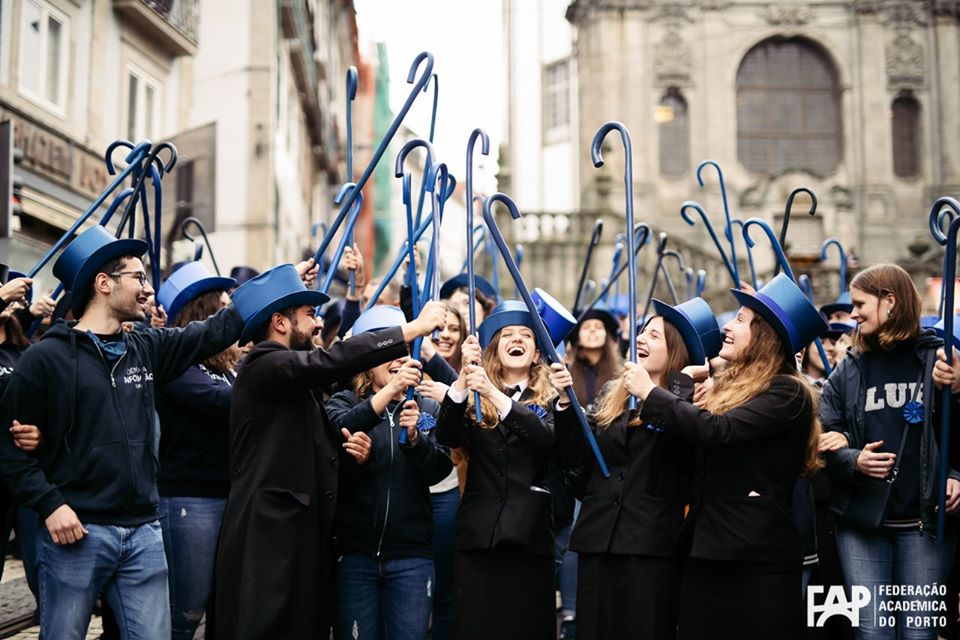
So, with this we hope you get really excited in getting to know our academic traditions. And believe us, this is just a really small part of everything there’s to know! There’s so much more to discover that you’d be mindblown! We portuguese students value a lot our traditions and we fight hard to keep them alive every year! When you come to Portugal, feel free to ask the students anything that you want to know and you’ll see that we are very passionate about this and will love to explain you everything!
Esperemos que estejas entusiasmado para conhecer as nossas Tradições Académicas. Acredita, isto é uma parte muito pequena de tudo o que existe para saber! Há muito mais para conhecer e vais ficar realmente surpreendido! Nós, estudantes portugueses, valorizamos muito as nossas tradições e lutamos todos os anos para mantê-las vivas! Quando vieres para Portugal, sente-te à vontade para perguntar aos estudantes tudo o que quiseres saber. Verás que somos realmente apaixonados por isto e vamos adorar explicar-te tudo!




